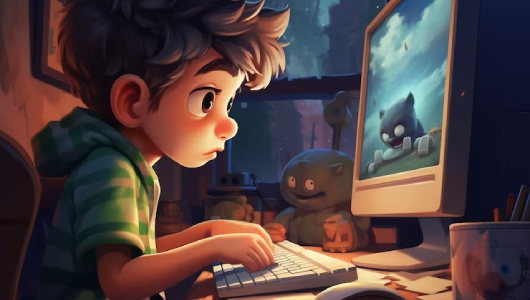A comprehensive 3D animation course is a study of using software to create characters, environments, props, and sets in a virtual, three-dimensional setting. It offers endless possibilities for creativity and technical expertise. 3D animators use digital tools to act out and create captivating stories. Even though it is a highly creative field, the art of animation requires high technical skills. In this blog, we will take a deep dive into what you can learn and how it can shape your future in the animation industry.
Introduction & Basics of 3D Animation
If you are new to 3D animation, enroll in a basic course. You need to learn the basic founding principles of 3D animation and how to apply them. Knowing the basics can provide a solid foundation that you may need to animate complex characters in the future. The core concepts of timing, weight, space, and how to apply these principles to create realistic animations are highly important to learn in the initial stage.
Once you learn the basics, you can proceed to understand the use of industry-standard software, like Autodesk Maya, Blender, and 3Ds Max. These software tools are used for 3D modeling, rigging, texturing, and animation.
3D Modeling & Sculpting
With a full-fledged course provided by a reputed 3D animation institute in Ghaziabad, you can learn 3D modeling and sculpting- one of the most critical skills in the world of animation. You get to learn how to design and create 3D models from scratch. It involves creating 3D objects, such as characters, environments, landscapes, or props, using polygons and other techniques.
For beginners, the first step of learning 3D animation is to create simple models. Once you can create models easily, you can proceed with advanced techniques, such as high-resolution sculpting. In sculpting, you can add intricate details to your models. At this step, you will be introduced to topology, ensuring that the models are clean and ready for animation.
Texturing & Shading
The next step is texturing and shading, where you can learn how to apply materials and texture to your 3D objects to make them look real. The process involves mapping images onto the surface of 3D models and adding color, patterns, and surface details.
Along with texturing, you can also learn about shading. It helps you understand how light interacts with the surface of your models. You will learn about different types of materials, such as metals, plastics, and fabrics, and how to create realistic lighting effects that mimic real-world objects.
Rigging & Skinning
With rigging, you can create a skeleton structure for a 3D model that moves. Once you learn rigging, you can build rigs for 3D characters that perform different movements, such as walking, running, and even making facial expressions.
Skinning is another important process of 3D animation that attaches the 3D mesh to the rig so that when the skeleton moves, the character’s skin deforms realistically. To master rigging and skinning, you need practice, as it is vital for character animation. The course comprises the technical part as well, which is important in bringing the art to life.
Lightening & Rendering
The 3D animation course provided by a reputed institute like MAAC Ghaziabad offers complete details of lighting and rendering. These two are highly crucial to create a realistic 3D animation. By mastering lighting, you can create shadows in soft, natural light, as proper lighting can enhance your art’s realism.
Rendering helps animators transform 3D models and animation data into a visible image or video sequence. It basically brings the virtual scene to life by displaying visual elements like lighting, shadow, textures, and reflections.
Post-Production & Compositing
It comes at a later stage of 3D animation course in Ghaziabad. It includes compositing, where different elements of your animation are combined into a single shot. You can also learn to add visual effects (VFX) to enhance the realism and impact of your animations.
It involves color grading and adding sound effects or music to complete the project. Mastering these can make you a skilled professional.
In A Nutshell
If you are creative with an artistic mind and want to achieve big in the animation field, enrolling yourself in an animation institute is highly important. You can get the skills necessary for a career in animation, gaming, film production, advertising, etc. Moreover, the hands-on experience and guidance from the industry-experts can help you develop a solid foundation and prepare you for a successful career.





